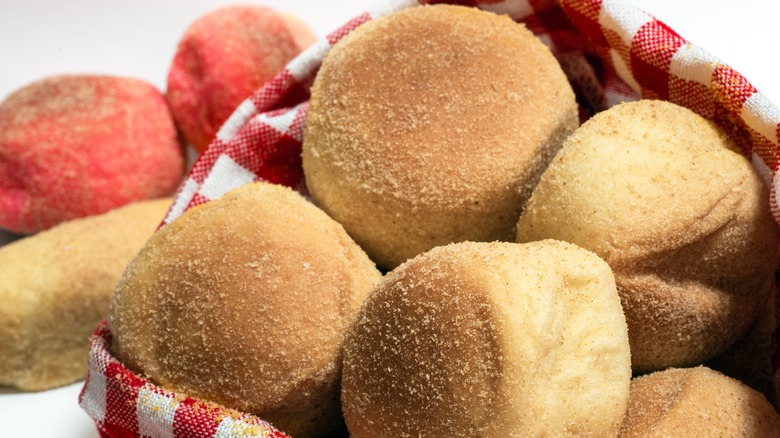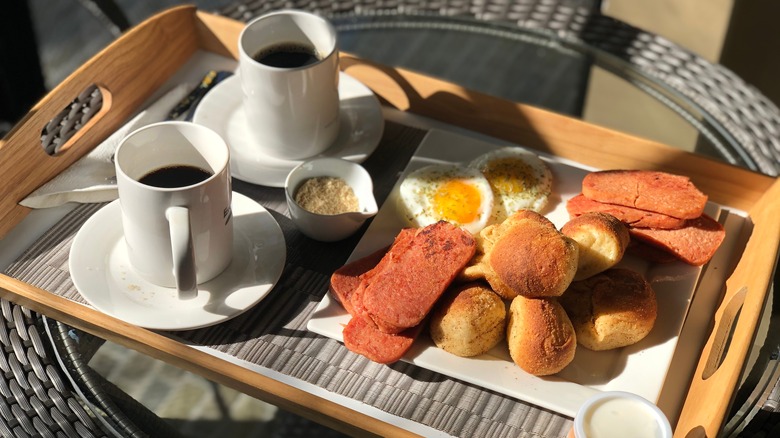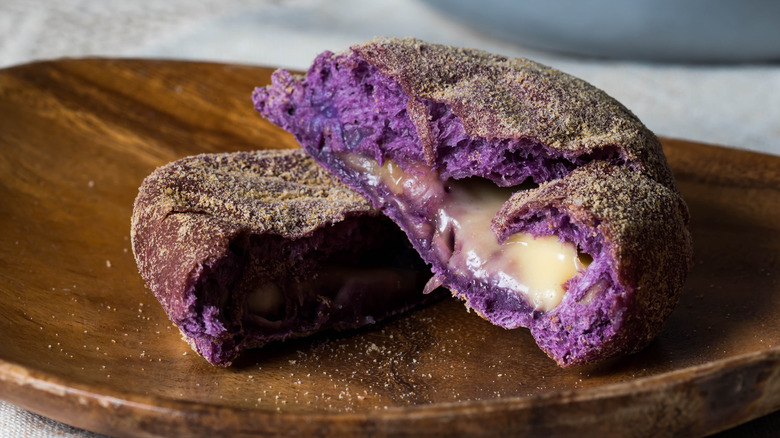Pandesal: The Fluffy Filipino Rolls That Should Be On Your Radar
Hawaiian rolls, challah rolls, and conchas — these are just some of the bread rolls that are regularly eaten alongside dinner or simply enjoyed by themselves. With an expansive history, one bread roll that should be on your next dinner plate is pandesal. Also known as pan de sal, the fluffy bread roll is a Filipino cuisine staple. How popular is pandesal in the Philippines? As The Washington Post puts it, "Filipinos treat pandesal like the French treat baguettes."
While pandesal translates to "salt bread" in Spanish, the bread is nothing but sweet. Defined by its golden crust and pillowy interior, pandesal is typically made from flour, sugar, salt, instant yeast, milk, eggs, and butter, though ingredients may vary. Milk and sugar help yield the pandesal's rich color and tenderness. The bread is also dipped in breadcrumbs — which is a defining characteristic of the bread roll — to get its signature golden crust.
How pandesal became a Filipino staple
Pandesal is typically enjoyed in the morning as breakfast. It can be dunked into black coffee, warm milk, or even hot chocolate. It is also usually enjoyed before a huge breakfast called almusal.
Like with many Filipino dishes, pandesal is a blend of various cultures. Due to its history of colonization, the Philippines and its cuisine are influenced by multiple countries, including China and Malaysia, as well as Spain and the United States, who both colonized the archipelago. In fact, about 80% of its cuisine "can be traced back to Spanish origin," according to The Washington Post.
Before colonization, the Filipino diet was largely based on rice. It is believed that Spanish and Portuguese explorers introduced wheat to the country, and thus, pandesal. The first version of pandesal was most likely bread made from whole wheat called pan de suelo. It wasn't until the import of American wheat and the "introduction of commercial yeast, canned dairy, and baking pans" by Americans, that the production and distribution of pandesal became more affordable and available, notes Eater.
Pandesal has evolved into many iterations
Though pandesal is a breakfast staple for many Filipinos, the bread roll has become a blank canvas for many and can be incorporated into any meal at any time of the day. Pandesal is often eaten with coconut jam, peanut butter, butter, or even condensed milk. Not only does pandesal pair well with sweet flavors, but it can also be used in savory dishes, as well. It is typically substituted for sandwich buns, stuffed with meat like spam or corned beef silog, a Filipino-style corned beef.
Due to its simplicity, pandesal can be transformed into nearly anything. Pandesal is a sweet bread roll at its heart, but many bakeries in the Philippines have added their own spin on the food staple. In addition to plain pandesal, there are now pandesal rolls flavored with ube (purple yam) and cheese, matcha, chocolate, Nutella, and more. Pandesal is being used for pizza, eggs Benedict, and even sandwiched with ice cream. Keeping with its adaptability, if you have day-old pandesal, try turning it into a frittata or using it to make French toast.


